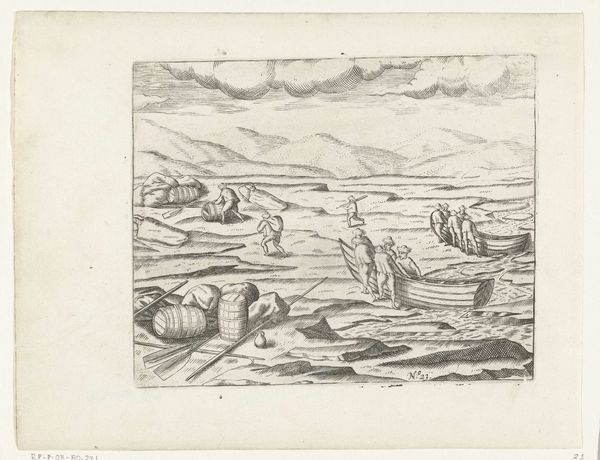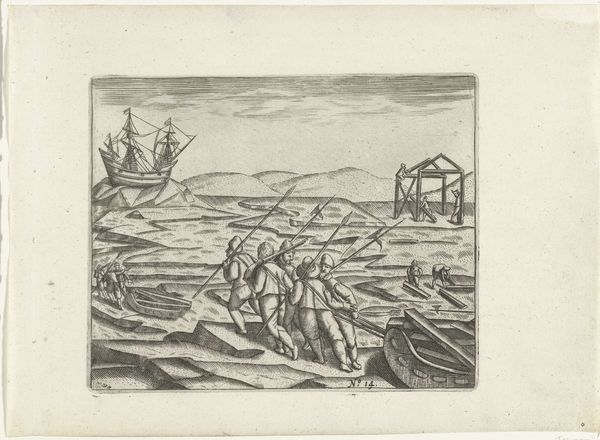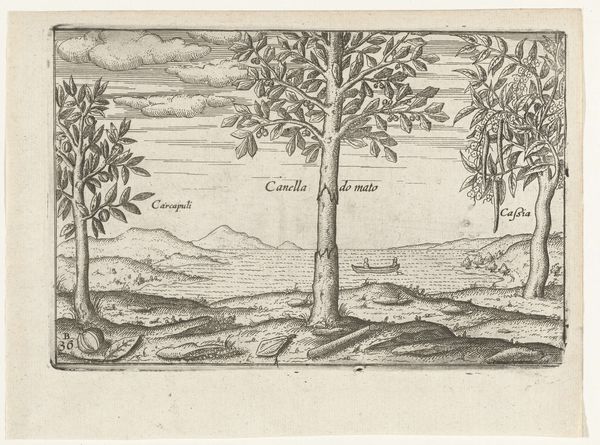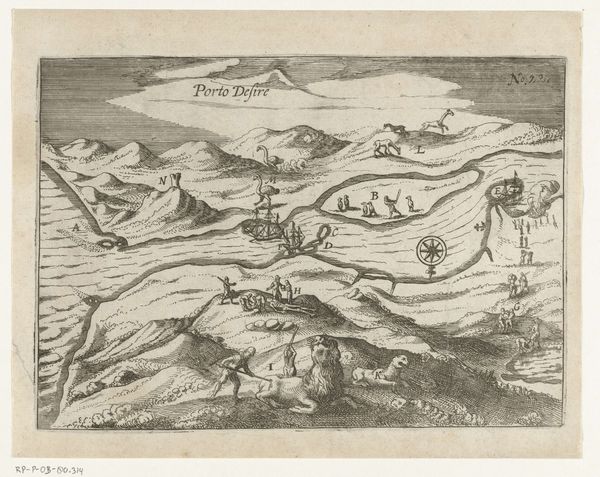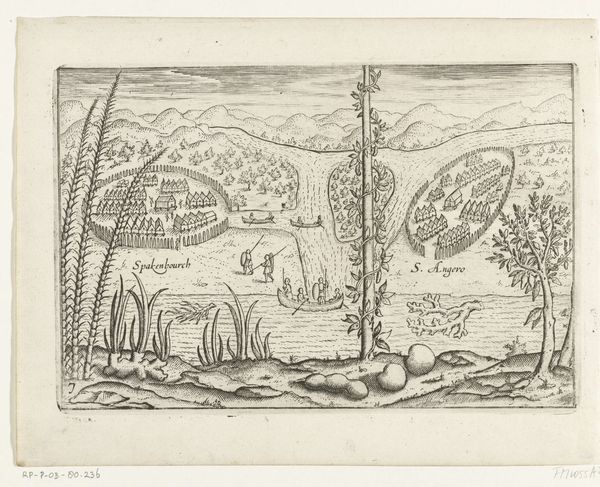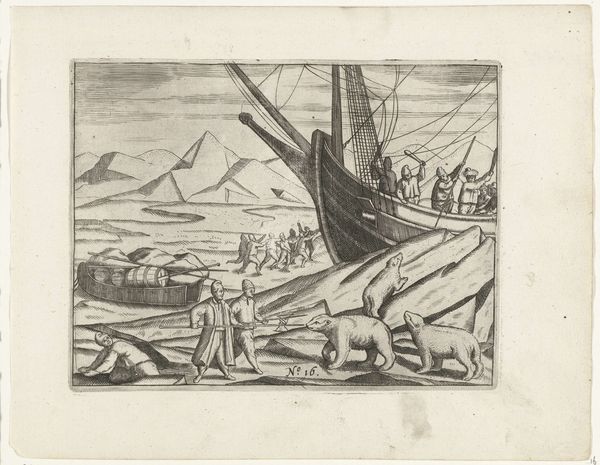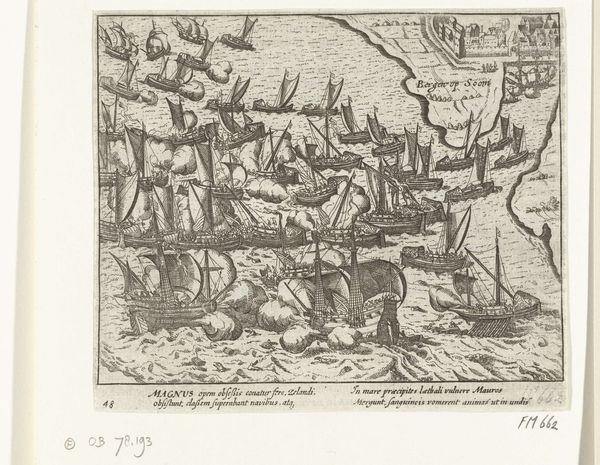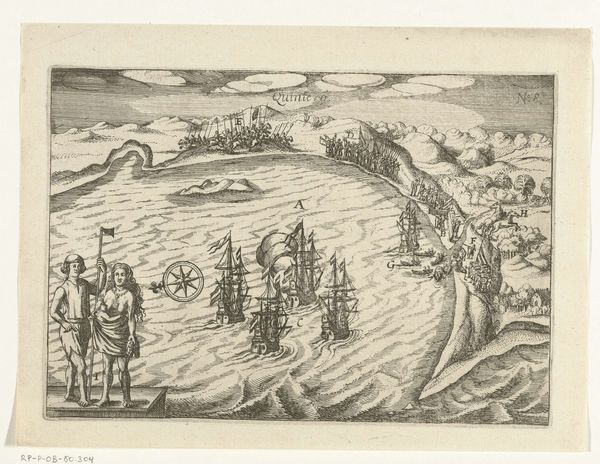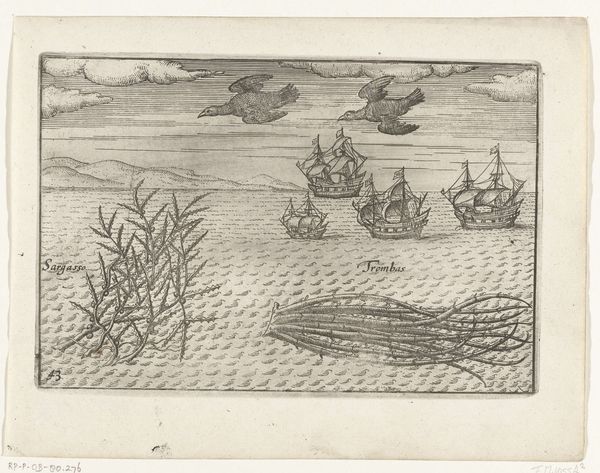
drawing, print, etching, intaglio, engraving
#
drawing
#
narrative-art
#
baroque
# print
#
pen sketch
#
etching
#
intaglio
#
landscape
#
pen work
#
engraving
Dimensions: height 142 mm, width 180 mm
Copyright: Rijks Museum: Open Domain
Editor: Here we have a print called *Het vrijmaken van een pad door het ijs naar de zee, 1597,* or *Freeing a Passage through the Ice to the Sea, 1597*. It's attributed to an anonymous artist, made between 1615 and 1617, using etching and engraving. There's this stark, almost desolate feel to it, but with figures actively working in this icy landscape. How do you interpret this work in terms of its historical and social context? Curator: That's a great initial response. For me, this image speaks volumes about the intersection of human ambition and the brutal realities of the natural world. Given the date, it places us squarely in the period of Dutch maritime expansion and exploration, but what's often missing from the heroic narratives is the lived experience, the immense labor and risk taken by ordinary people. Look at how they’re dwarfed by the landscape, these tiny figures struggling against the ice. What does that scale suggest to you about the artist’s perspective? Editor: Maybe the artist is trying to convey the immense power of nature versus humanity? Curator: Precisely! And let's not forget the "sea" in the title and that a path to the sea had to be ‘freed.’ Maritime expeditions and naval adventures are very much defined and decided through geographical control, thus translating to cultural and socioeconomic impact. These weren't just voyages of discovery, but acts of claiming, of exerting power. Who benefits and who pays the cost of that "freeing?" Editor: That reframing really shifts my perspective. I was initially focused on the "adventure" aspect, but I now see the image pointing towards an early form of exploitation, both of people and the environment. Curator: Exactly. And seeing it that way allows us to engage with the work in a far more critical way, considering its implications and resonance even today. We’re invited to view progress, perhaps, through the grit and determination of ordinary men but to reflect critically, too, on the total expense. Editor: That gives me a lot to think about. Thanks! Curator: Likewise. Thinking about art with you brings an important perspective.
Comments
No comments
Be the first to comment and join the conversation on the ultimate creative platform.
